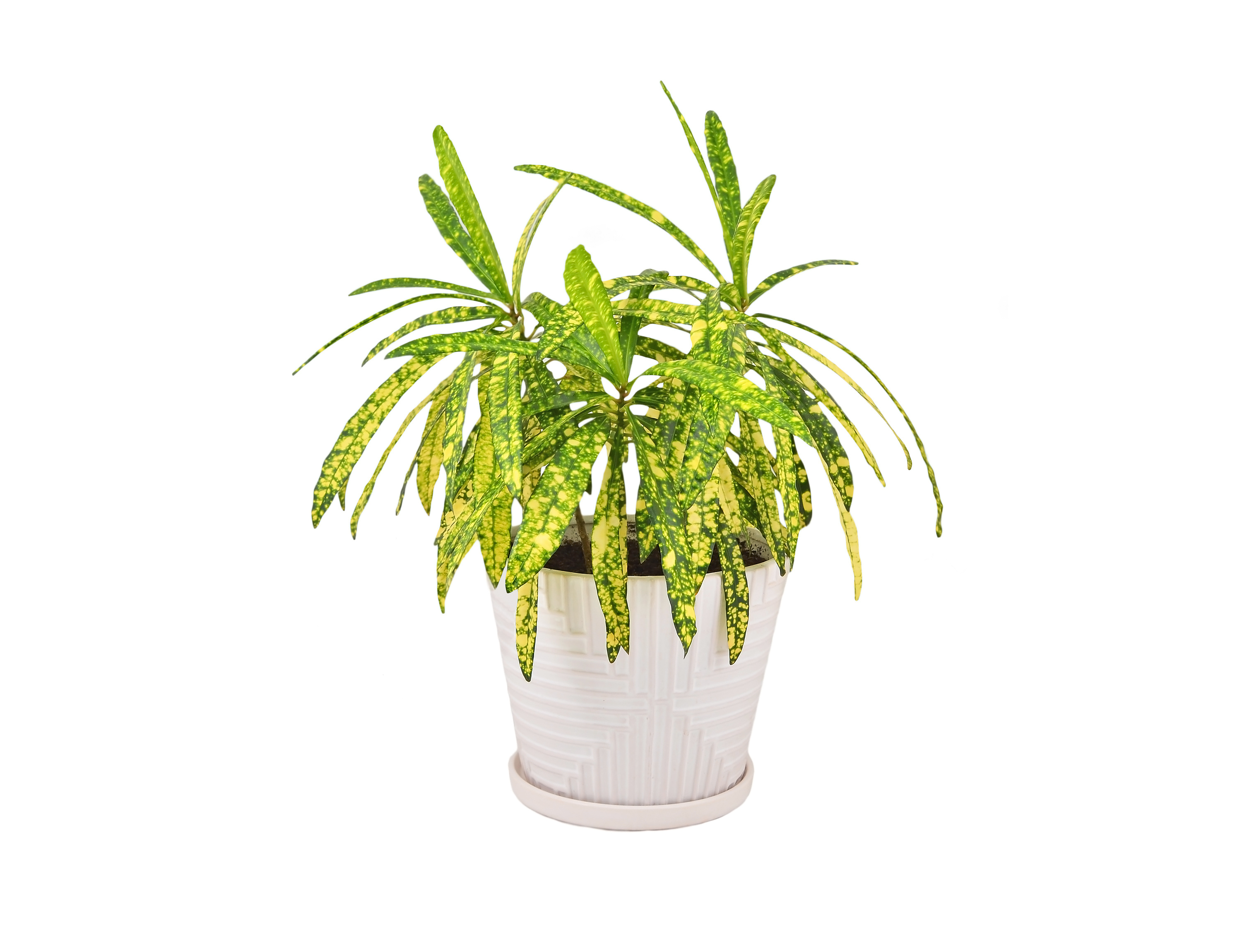Unveiling the Gold Star Croton Plant, a botanical masterpiece renowned for its captivating foliage, we embark on a journey to unravel its origins, characteristics, and diverse applications. From its vibrant hues to its medicinal properties, this extraordinary plant beckons us to explore the wonders of the plant kingdom.
Native to the tropical regions of Southeast Asia, the Gold Star Croton Plant, scientifically known as Codiaeum variegatum var. pictum, boasts a captivating array of common names, including Painted Croton and Joseph’s Coat. Its captivating leaves, adorned with intricate patterns and a kaleidoscope of colors, make it a prized ornamental, adding a touch of tropical flair to any garden or indoor space.
General Overview of the Gold Star Croton Plant

The Gold Star croton, scientifically known as Codiaeum variegatum ‘Gold Star’, is a popular ornamental plant known for its vibrant foliage and tropical appearance. Originating in Malaysia and Indonesia, it is a member of the Euphorbiaceae family and is commonly referred to as the “Gold Dust Croton” due to its distinctive golden-yellow leaves.
Gold Star crotons are small to medium-sized shrubs that typically reach heights of 3-6 feet (0.9-1.8 meters). They feature alternate, ovate-shaped leaves with serrated margins. The main attraction of this plant lies in its variegated foliage, which displays a stunning combination of bright yellow, green, and red hues. The leaves are often adorned with intricate patterns and veins, creating a captivating visual effect.
Hardiness Zones and Growing Conditions
Gold Star crotons are not cold-hardy and thrive in warm, humid climates. They prefer well-drained soil with a pH between 6.0 and 7.0. These plants require bright, indirect sunlight to maintain their vibrant foliage and can tolerate partial shade. In areas with colder winters, they can be grown indoors as houseplants.
Care and Cultivation of the Gold Star Croton Plant

The Gold Star croton is a relatively easy plant to care for, but it does have specific requirements for optimal growth and coloration. By providing the right environment and care, you can enjoy the vibrant foliage of this plant for years to come.
Planting
The Gold Star croton prefers well-drained soil that is rich in organic matter. It can be planted in a pot or in the ground, but it is important to choose a location that receives bright, indirect light.
Watering
The Gold Star croton should be watered regularly, but it is important to allow the soil to dry out slightly between waterings. Overwatering can lead to root rot, so it is best to err on the side of caution.
Fertilizing
The Gold Star croton should be fertilized monthly during the growing season with a balanced fertilizer. Avoid over-fertilizing, as this can damage the plant.
Lighting
The Gold Star croton prefers bright, indirect light. It can tolerate some direct sunlight, but it is important to avoid exposing the plant to too much direct sunlight, as this can scorch the leaves.
Temperature, Gold star croton plant
The Gold Star croton prefers warm temperatures and does not tolerate cold well. It is important to keep the plant at a temperature of at least 60 degrees Fahrenheit (16 degrees Celsius). If the temperature drops below 50 degrees Fahrenheit (10 degrees Celsius), the plant may suffer damage.
Propagation
The Gold Star croton can be propagated through cuttings or seeds. Cuttings should be taken from healthy stems and rooted in moist soil. Seeds can be sown in moist soil and kept warm until they germinate.
Uses and Applications of the Gold Star Croton Plant
The Gold Star Croton plant is a versatile species with diverse uses and applications. Its striking foliage and adaptability make it a popular choice for both decorative and medicinal purposes.
Ornamental Uses
The Gold Star Croton is highly valued for its ornamental qualities. Its colorful leaves add a vibrant touch to gardens and indoor spaces. It is often used as a standalone specimen plant or as part of mixed borders and containers.
Medicinal Properties
Traditionally, the Gold Star Croton has been used in herbal medicine for various ailments. Its leaves contain compounds with antibacterial, antifungal, and anti-inflammatory properties. In some cultures, it is used to treat skin conditions, wounds, and digestive issues.
Landscaping and Design
The Gold Star Croton is a versatile plant for landscaping and design. Its compact size and adaptability make it suitable for small gardens, patios, and even indoor spaces. Its colorful foliage provides a striking contrast against other plants and can be used to create focal points or add interest to shady areas.